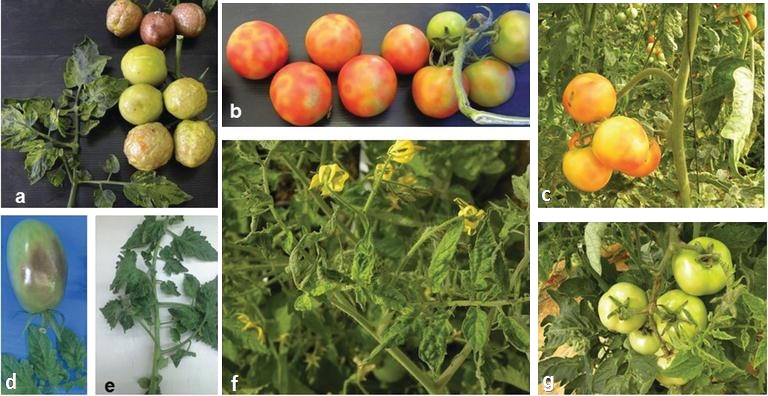Tomato That Can Stand up To Deadly Plant Virus on the Way
Syngenta Vegetable Seeds has announced the launch of its first commercial tomato brown rugose fruit virus (ToBRFV)-resistant variety, which will be available in early 2021. The new virus-resistant tomato will be released in areas where growers face severe disease pressure from the virus, and will support against crop losses.
“The Syngenta Vegetables R&D team is ahead of the curve with the launch of the first commercial ToBRFV-resistant variety,” says Ruud Kaagman, Global Crop Unit Head for Tomatoes. “Following this launch, we will aim to introduce varieties with resistance to ToBRFV across our breeding programs and across the globe. Broad resistance will be built in the portfolio during the next several years.”
ToBRFV is a newly discovered tobamovirus related to tobacco mosaic virus (TMV) and tomato mosaic virus (ToMV). The very stable and very infectious virus infects both tomatoes and peppers.

Tomato plants infected with tomato brown rugose fruit virus. (a, d) Brown rugose symptoms developed on fruit. (b, c) Chlorotic spots on fruit. (a, e-g) Mosaic pattern developed on leaves and narrowing accompanied by mottling leaves. (g) Necrotic symptoms on pedicle (stem), calyces, and petioles. (Source: Dombrovsky and Smith 2017 [CC BY 3.0]).
Different levels of resistance to ToBRFV exist in Syngenta’s current germplasm, but with modern technology, the R&D team discovered and targeted the specific genes related to the resistance.
“With fast development and use of molecular markers, Syngenta is able to rapidly make use of this resistance, deploying it in a large range of varieties; spreading the resistance in our germplasm. Before the utilization of molecular markers, it could take up to 10 years to develop a resistant variety. With broad use of molecular technology, Syngenta can more accurately and quickly breed a resistant variety,” says Pilar Checa, Global Breeding Lead for Tomato.
Click here for more information about the new virus-resistant tomato.










